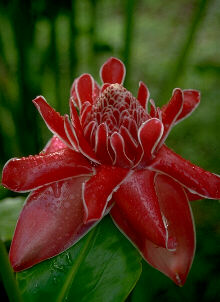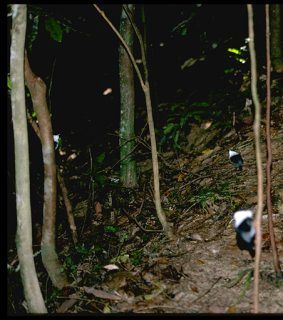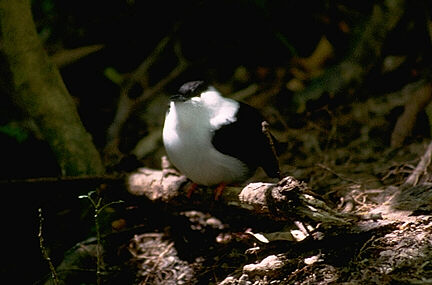 Trinidad Birdwatching Tour
Trinidad Birdwatching Tour Trinidad Birdwatching Tour
Trinidad Birdwatching TourWe walked every morning along the driveway and along footpaths that took us through woods and open clearings. We saw termite nests and ant trails, coffee and banana plants, huge clusters of bamboo, cecropia trees, and an occasional leafless immortelle tree with brilliant orange flowers. When the clay soil of the footpaths was wet, we had to watch our step and we always sprayed our shoes and socks to keep away chiggers.
One of the many bromeliad blossoms 
Orange blossoms of an immortelle tree 
A 10-minute walk down the old Guacharo Trail brought us to the white-bearded manakin lek. These tiny territorial birds, the size of a northern chickadee, cleared territories bounded by pencil-sized saplings and jumped excitedly from stick to stick whenever a female manakin was near. Their wings made loud clicking noises, like an insect - you could hear the snapping from quite far away. Early afternoon was prime time to see these active birds.
Manakins on their lek 
A white-bearded manakin close up
Deeper in the forest, we heard bellbirds calling, sounding like a twanging anvil. It was hard to spot them in the forest but since they called loudly and often, we finally located one through the foliage.
Even farther down the trail, the guides showed us the nest of an ornate hawk-eagle. To see it, you had to stand in just the right place by the trail marker and peer through a particular hole in the foliage. A young bird was in the nest. During one of our visits, I saw a parent hawk-eagle stop by. David was busy trying to spot a toucan that the guide had heard and missed it.
Text and web design: Pamela Marshall.
Photos: David Emerson (most) and Pamela Marshall (a few).
Copyright © 1997 Pamela J. Marshall and David J. Emerson. All
rights reserved.
Last edited: June 25, 1998.